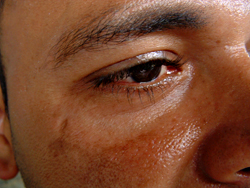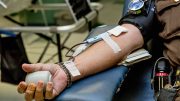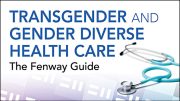 By: Christine Nicco/TRT Reporter—
By: Christine Nicco/TRT Reporter—
Recently, the National Coalition of Anti-Violence Programs (NCAVP) released its report Intimate Partner Violence in Lesbian, Gay, Bisexual, Transgender, Queer (LGBTQ), and HIV-Affected Communities in 17 states across the country in 2013.
According to the report, LGBTQ and HIV-affected intimate partner violence (IPV), also known as partner abuse or domestic violence, increased in 2013, with incidences leading to 21 homicides, the highest recorded. Of the report’s homicide victims, 76 percent were gay men, up from 48% the year prior.
“We are deeply concerned about the continued record high number of intimate partner violence homicides that occurred this year, which is part of a three-year trend in high homicide rates affecting our communities,” said Justin Shaw, Executive director of Kansas City Anti-Violence Project. “The truly alarming number of gay men killed due to intimate partner violence indicates a need to expand the national discourse around intimate partner violence, to ensure that it includes gay men, bisexual people, transgender, and gender non-conforming people. This is a crisis that affects everyone.”[pullquote] LGBTQ and HIV-affected people of color made up the highest percentage of IPV survivors at 50.2 percent. The report also stated that these groups of individuals were “more likely to report experiencing physical violence, discrimination, threats or intimidation, and harassment as a result of IPV.[/pullquote]
However, as a whole, the most impacted communities included gay men, LGBTQ and HIV-affected communities of color, LGBTQ and HIV-affected youth and young adults, bisexual survivors, and transgender individuals.
“As we see the full implementation of an LGBTQ-inclusive Violence Against Women Act, and as awareness about LGBTQ intimate partner violence increases, we believe that we will begin to see a rise in incidents of IPV being reported to NCAVP and its member organizations,” said Osman Ahmed from the New York City Anti-Violence Project. “This report calls on policymakers to ensure that the federal government collects information on sexual orientation and gender identity, whenever demographic data is requested in studies, surveys, and research, including intimate partner violence, so we are prepared and able to support all survivors.”
LGBTQ and HIV-affected people of color made up the highest percentage of IPV survivors at 50.2 percent. The report also stated that these groups of individuals were “more likely to report experiencing physical violence, discrimination, threats or intimidation, and harassment as a result of IPV. LGBTQ and HIV-affected people of color were also more likely to experience IPV incidents in public spaces.”
“People of color make up the majority of LGBTQ survivors and are disproportionately impacted by domestic violence within relationships. This is a national wakeup call,” said Mary Case from the Los Angeles LGBT Center. “There is an obvious need to support programs and services that are focused on this group of intimate partner violence survivors—people of color who identify as LGBTQ and/or are affected by HIV.”
The transgender community experienced disproportionate numbers of IPV in a variety of categories such as physical violence, discrimination due to IPV and IPV in public spaces. [pullquote]“Transgender people across the country are disproportionately impacted by violence in intimate relationships compared non-transgender counterparts, a finding that is consistent in terms of the clients seen by the Violence Recovery Program (VRP) at Fenway Health. … Between 2012 and 2013, we saw an 11% increase in reports of intimate partner violence experienced by transgender clients.—Fenway Health’s Violence Recovery Program Manager, Cara Presley-Kimball[/pullquote]
Fenway Health’s Violence Recovery Program Manager, Cara Presley-Kimball explains.
“Transgender people across the country are disproportionately impacted by violence in intimate relationships compared non-transgender counterparts, a finding that is consistent in terms of the clients seen by the Violence Recovery Program (VRP) at Fenway Health,” stated Presley-Kimball. “Between 2012 and 2013, we saw an 11% increase in reports of intimate partner violence experienced by transgender clients. The growth in the number of transgender IPV reports is startling.”
M.E. Quinn, Director of Organizing and Education at Boston’s The Network/La Red furthers.
“Transgender people face increased risk of violence because of discrimination based on their gender identity and transphobia within intimate partnerships,” Quinn said. “To really address the needs of transgender survivors, we need to address transphobic laws, policies, and institutions while also providing supportive programs that address transgender people explicitly and that engage transgender survivors in preventing this violence.”
Of those reporting abuse to the NCAVP, nearly 37 percent of survivors were between the ages of 19 and 29 and were at an increased risk of physical and sexual violence within IPV relationships and more likely to need medical attention as a result of physical injury.
“These alarming statistics show that it is imperative that policymakers and funders support early intervention and prevention programs for youth to prevent and reduce IPV in LGBTQ and HIV-affected communities,” said Lynne Sprague from Colorado Anti-Violence Program.
At a particular risk of IPV are undocumented survivors, who were 2.9 times more likely to experience discrimination within IPV relationships.
“Undocumented survivors are at a particular risk for IPV because abusive partners can threaten and place their immigration status at risk, and survivors may be reluctant to seek support for fear of revealing their immigration status to law enforcement and immigration authorities,” said Norio Umezu from community United Against Violence. “Now is the time for policymakers to enact compassionate, comprehensive immigration reform to reduce barriers for LGBTQ and HIV-affected immigrant survivors of IPV.” [pullquote]At a particular risk of IPV are undocumented survivors, who were 2.9 times more likely to experience discrimination within IPV relationships.[/pullquote]
And in the bisexual community, survivors were more likely to experience sexual violence, physical violence and injury as a result of the abuse. The National Intimate Partner Violence Survey, a study on domestic violence in the LGB community, revealed that “61 percent of bisexual women and 37 percent of bisexual men experienced rape, physical violence, and/or stalking in their lifetimes within IPV.”
LGBTQ and HIV-affected survivors of violence rarely go to the police, the courts or domestic violence shelters for support, the report stated. Similar to last year’s findings, few survivors accessed critical assistance such as first responder services, including police, domestic violence shelters, and orders of protection when experiencing intimate partner violence.
To learn more about the NCAVP’s findings and course of action, visit www.avp.org.
NCAVP works to prevent, respond to, and end all forms of violence against and within lesbian, gay, bisexual, transgender, queer (LGBTQ), and HIV-affected communities. NCAVP is a national coalition of 53 local member programs and affiliate organizations in 25 states, Canada, and Washington DC, who create systemic and social change. We strive to increase power, safety, and resources through data analysis, policy advocacy, education, and technical assistance. NCAVP is coordinated by the New York City Anti-Violence Project.







